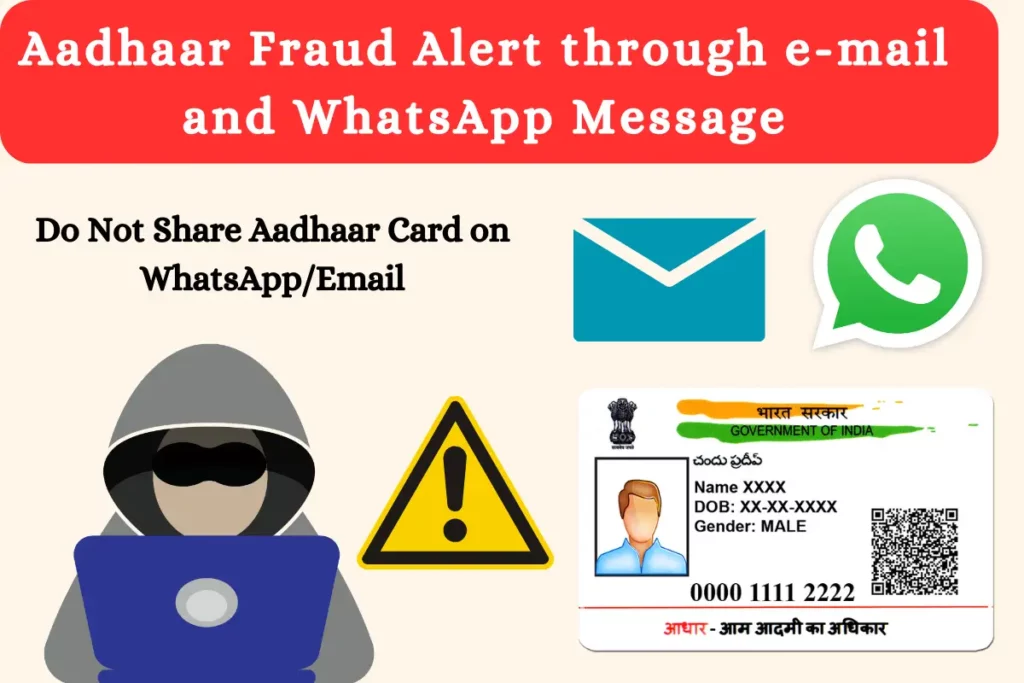UIDAI Update: Aadhaar users have been warned about the increasing number of fraud and scam cases by UIDAI, the organization responsible for overseeing Aadhaar. It has encouraged residents to exercise caution and avoid disseminating private images like Aadhaar photos through unauthorized channels.
To update your Aadhar card, the Unique Identification Authority of India (UIDAI) has issued a precautionary warning against providing identity or address proof documents through email or WhatsApp. The authority claims that it never asks anyone to submit their documents this way and that demands are often bogus.

According to a recent post by UIDAI, the government never requests Proof of Identity (POI) or Proof of Address (POA) documents through email or WhatsApp for Aadhaar updates. The authorities request that people use reputable internet channels.
Aadhaar Scam on the Rise – UIDAI Update
The warning comes in response to the recent rise in Aadhaar-related scams, wherein fraudsters trick victims into handing over their Aadhaar card and number. Scammers can use anyone’s card to carry out fraudulent activities, as Aadhaar is a personal identification number given to all Indian citizens.
There are many ways in which Aadhaar can be tampered with by scammers. They can either use a fake Aadhaar card or steal your Aadhaar card. They can also hack the UIDAI database to steal your Aadhaar data.
QR code verification
The government has urged people to keep their Aadhaar information private to avoid scams or other problems. Additionally, it has encouraged users to use the QR code on the card to verify their Aadhaar.
Since UIDAI digitally authenticates the QR code, it cannot be changed. As a result, it would be incredibly challenging for someone to create a fake QR code and use it to steal your Aadhar data. Because of this, verifying Aadhaar by scanning the QR code is a quick and simple process that eliminates the need for lengthy OTP verification processes on your mobile device.
How to use QR Code to Verify Aadhaar
OTP Verification for Aadhaar
- Get the mAadhaar app from the Apple App Store or Google Play Store.
- Select “Verify Aadhaar” from the menu after opening the app.
- The QR code on the Aadhaar card, e-Aadhaar, or Aadhaar PVC needs to be viewed with your phone’s camera.
- After scanning the QR code by the app, the details of the Aadhaar holder will be displayed.
- After checking the information, click on the “Verify” button.
However, if your Aadhaar has been compromised, you must inform UIDAI immediately. You can do so by calling their hotline 1947 or filing a complaint online at uidai.gov.in.
The government also encourages people to use secure methods like myAadhaarPortal, mAadhaarApp, and UIDAI’s social media accounts to access their Aadhaar.
FAQs – Frequently Asked Questions
Q. How can I check if my Aadhaar card has been tampered with?
Ans. To check this, visit the official website of UIDAI, which provides access to “Aadhaar Authentication History,” which will tell you if your card has been used fraudulently.
Q. Can you validate an individual’s Aadhaar card?
Ans. You can use their Aadhaar number or QR code to validate someone else’s Aadhaar.
Q. What can hackers do with Aadhaar card?
Ans. Like no one can access your bank account just by knowing your ATM card number; similarly, no one can access your bank account just by knowing your Aadhaar number.
Conclusion
In the context of Aadhaar scams, we have tried to give comprehensive information. I am sure you must have understood the content of Aadhaar scams. We sincerely hope that you would have enjoyed reading this information.